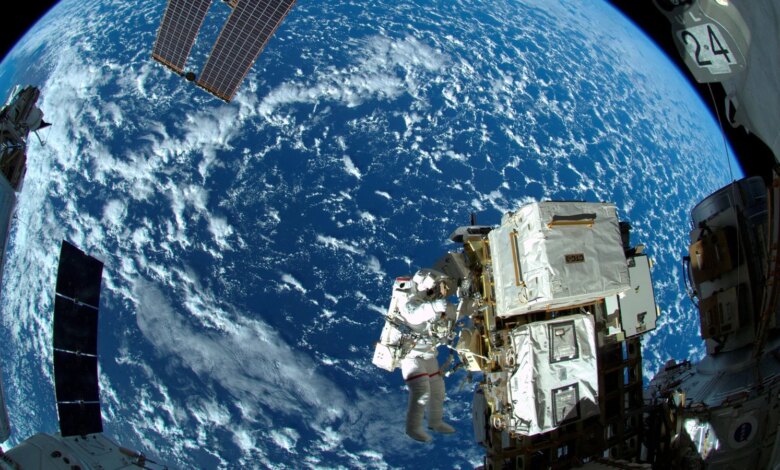NASA explains how the International Space Station benefits humanity

NASA explained how the International Space Station benefits humanity back to Earth. Check out 5 points here.
Space is full of interesting objects, most of which remain unexplored. Scientists and researchers are constantly trying to find and discover new things. The International Space Station also helps. The space station is used for research and experiments and now NASA has explained the ways the International Space Station is benefiting humanity back to Earth. “With more than 20 years of testing conducted on the station, more breakthroughs are happening than ever before” NASA said in a report. Here are 5 ways the space station is benefiting humanity.
1. Producing the next generation of medical scanning technology: On a mission to study neutron stars, the team behind the NICER telescope created and patented an X-ray source that can be turned on and off very quickly, according to NASA. This is also what a neurologist at Massachusetts General Hospital needed on a quest to improve CT scan results. The Massachusetts General Hospital and NICER teams worked together to create a static ring of these small new modulated X-ray sources that could be mounted around the patient, which could be fired as needed. This technique can reduce the amount of radiation a patient is exposed to and allows for better image quality even at lower radiation levels. Limiting radiation exposure is useful for patients on Earth today and potentially for future astronauts en route to Mars. The device has been patented and additional work is currently underway to bring it from prototype to testable device.
Also read: NASA warns of terrifying flares on the sun! Earth will be affected
2. Creating new drugs for disorders like Duchenne Muscular Dystrophy: A study by the International Space Station of the crystal structure of a protein associated with Duchenne muscular dystrophy (DMD), an incurable genetic disorder, has provided suggestions for possible combinations. substances that can inhibit it. A professor at the University of Tsukuba in Tsukuba, Japan used those suggestions to design several promising compounds, including TAS-205. A 2015 study verified the safety of TAS-205 for use in humans, and a small clinical trial in patients was published in 2017. A phase 3 trial tested the effectiveness of TAS-205. TAS-205 in situations similar to actual clinical use began in December 2020 and will continue until 2027. The team estimates the drug could slow the progression of DMD halved, potentially doubling the life expectancy of many patients, NASA announced.
3. Application of robotic arm technology in automobile factory: The advent of the space station robot Robonaut led to the development of industrial robotic gloves. NASA and General Motors (GM) developed a Robonaut prototype and tested it on the station, where it successfully performed simple tasks alongside astronauts. The team then reconfigured the Robonaut’s hand-like part into a wearable device to help both astronauts and car workers avoid hand fatigue and injury. Originally called the Robo-Glove, the device is now marketed as Ironhand, manufactured by Bioservo Technologies of Sweden.
Also read: Crops can be grown on Asteroids! Here’s what THIS exciting study reveals
4. Student research in space: People born after November 2000 always know how to live with people in space. NASA said, “Let’s call them Generation Stations, the ones to which space has always seemed to be accessible, a place where scientists around the globe conduct research. Many students around the globe have even gone to school. send their own research or code to the station They have helped conduct DNA sequencing experiments as part of the Genes in Space program, or robots are controlled using their code as part of Experiments Kibo robotics challenge. Many people have designed and deployed small satellites from the space station, putting their work into low Earth orbit.”
5. Better understand the basic science of the world: Many experiments on the station are uncovering new information and providing clues to longstanding scientific mysteries. This information helps researchers advance humanity’s understanding of things like combustion or fluid physics, which could lead to improvements in everything from fuel efficiency to electrical equipment cooling. death. “When researchers in NASA’s FLEX study analyzed extinguishing agents by studying burning fuel droplets, they made a surprising discovery: continuing to ‘burn’ at low temperatures after the flame goes out. Now called a cold flame, this burning is different from the one that keeps us warm by the campfire. Typical fires produce soot, carbon dioxide and water. . Cold flames produce carbon monoxide and formaldehyde. Learn more about how the behavior of these chemically different flames could lead to the development of more efficient, less polluting vehicles,” said NASA. said.




